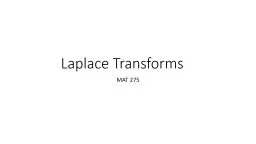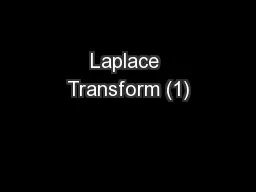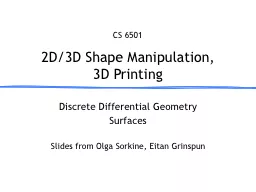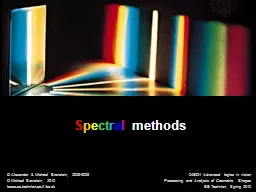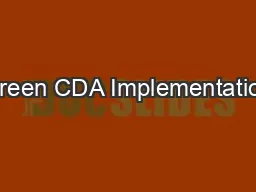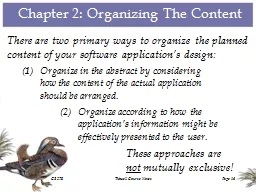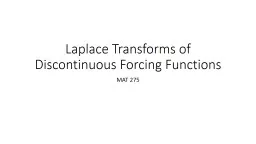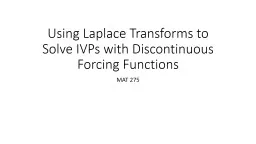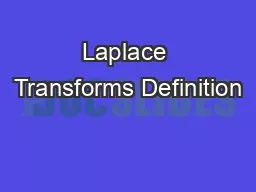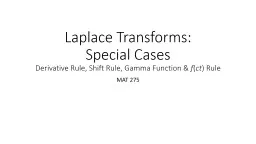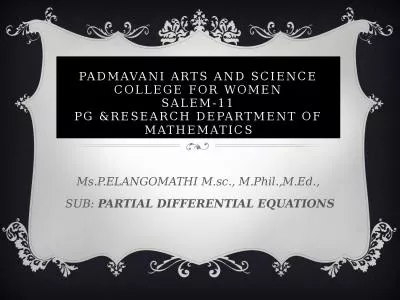PPT-Laplace Transforms MAT 275
Author : tawny-fly | Published Date : 2018-10-29
Let be a function Its Laplace Transform written is a function in variable s defined by Case 1 Constants Let where c is any constant Then The integral
Presentation Embed Code
Download Presentation
Download Presentation The PPT/PDF document "Laplace Transforms MAT 275" is the property of its rightful owner. Permission is granted to download and print the materials on this website for personal, non-commercial use only, and to display it on your personal computer provided you do not modify the materials and that you retain all copyright notices contained in the materials. By downloading content from our website, you accept the terms of this agreement.
Laplace Transforms MAT 275: Transcript
Download Rules Of Document
"Laplace Transforms MAT 275"The content belongs to its owner. You may download and print it for personal use, without modification, and keep all copyright notices. By downloading, you agree to these terms.
Related Documents

